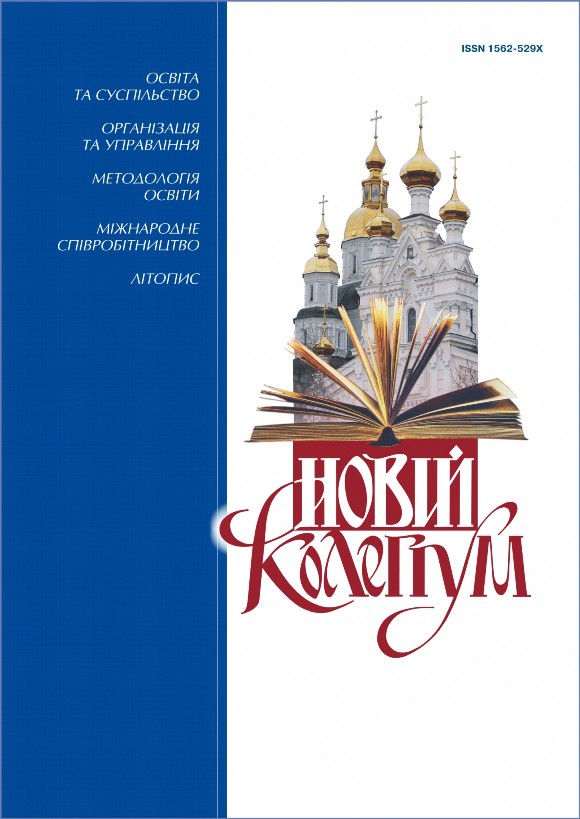Symbolic systems of biblical hermeneutics in the plane of poetics of works of ancient Ukrainian literature
DOI:
https://doi.org/10.30837/nc.2022.3.79Keywords:
sign, biblical hermeneutics, exegete, Bible, canonAbstract
The article is devoted to highlighting and analyzing the main types of symbolic systems of biblical hermeneutics in the structure of poetics of works of ancient Ukrainian prose.
The study emphasizes that the canon of interpretation of the Bible long ago assumed the unequivocalness of statements and the infallibility of the understanding of the text, which was specified and commented on within the limits of hermeneutic teaching. Understanding the Bible was complicated by the co-authorship of God and man, the need to decode the sensus plenior in the Holy Scriptures in parallel with the meaning that the human author put into the Bible, different readings of the word-sign, word-allegory or word-symbol as elements of a separate figure of speech, a passage or the entire text. Biblical hermeneutics proposed as one of the means to eliminate uncertain categories of understanding, the concept of unambiguity within the biblical canon.
The author made an attempt to use F. de Saussure's structuralist model of the linguistic sign in the inseparable unity of the signifier and the signified as a tool for interpreting biblical texts in the works of Ukrainian baroque literature, as well as the improved triadic system of the sign of Ch. Peirce, where the sign consists of the representamen – the form that the sign takes, and it does not necessarily have to be material, the interpretant, which, regardless of the name, is mostly not an interpretation, but rather a meaning obtained from a sign and gives the sign meaning even in the absence of an interpreter, the object – that which the sign is sent.
Ancient exegetes considered the complete content of the Bible, i.e. the coherence of its individual parts and books, to be the indisputable intention of God, which cannot be understood outside the sensus plenior. The controversial reading of certain parts of the text of the Holy Scriptures was supposed to be removed by the introduced four-way biblical hermeneutics.
References
Барт Р. Від твору до тексту. Антологія світової літературно-критичної думки XX ст. Львів : Літопис, 1996. С. 380 – 384.
Барт Р. Смерть автора; [пер. с фр. Г. К. Косикова] // Барт Р. Избранные работы : Семиотика : Поэтика. Москва : Прогресс, 1989. C. 384 – 391.
Левченко Н. Біблійна герменевтика в давній українській літературі : монографія. Харків : Майдан, 2018. 392 с.
Пирс Ч. Начала прагматизма ; пер. с англ., предисловие В. В. Кирющенко, М. В. Колопотина. Санкт-Петербург : Алетейя, 2000. 352 с.
Смотрицький Герасим. Ключ царства небесного / В. М. Мойсієнко, В. В. Німчук (підгот.). Факсим. копія вид. 1587 р. Житомир, 2005. 124+44 с.
Сосюр Ф. де. Курс загальної лінгвістики. Київ : Основи, 1998. 324 с.
Фуко М. Археологія знання; [пер. з фр. В. Шовкун ]. Київ : Вид-во Соломії Павличко «Основи», 2003. 326 с.
Danielou J. SourcesChrétiennes. Vol. 1. Paris : Ed. duCerf, 1941. 376 р.
Goidsmith E. Ancientpagansymbols. Detroit, 1976. 220 р.
Herzog U. DerdeutscheRomandes 17. Jahrhunderts : EineEinfuhrung. Stuttgart : Kohlhammer, 1976. 225 р.

